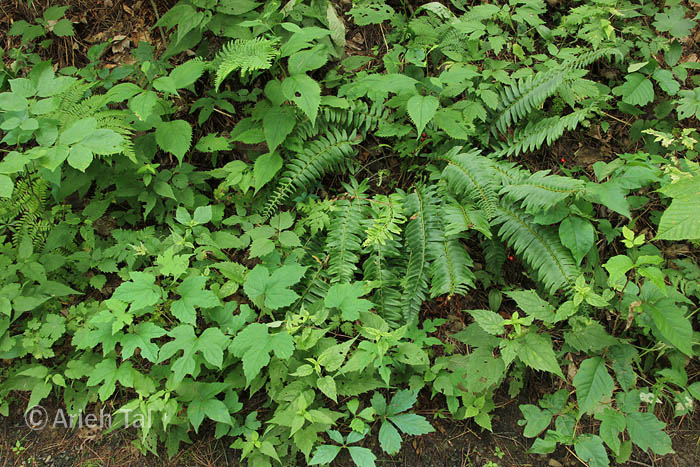|
|
||
| x Figure A. View of a subsection of the middle rim trail - the "rich woods". June 2019. |
|
. |
||||
| . . |
Home | Ecology Main | Documentation | . |
|
Plant
Ecology of the Area Surveyed Middle Rim Trail - Rich Woods |
||||
|
|
||
| x Figure A. View of a subsection of the middle rim trail - the "rich woods". June 2019. |
| Whether
you begin your hike along the rim trail from the bottom of the hill or
from the King Road entrance, you'll make a ninety-degree turn to enter
this part of the trail. This is the "heart" of the rim
trail; arguably the most scenic part. Here, you are too far from
the waterfalls to hear cascading water or the sounds of other hikers on
the gorge trail. The trail is rough due to exposed tree roots,
minor washouts from storms and the crumbling remains of what must have
been sections of asphalt pavement, ages ago. This will be one of
the steepest parts of your hike along the rim trail.
Beneath a mature, dense, mixed forest of hardwoods and conifers, it's relatively dark during the growing season. The soil is moist but moderately well-drained for most of the way. The trail transects two slopes, the main east-west slope of South Hill, and a secondary slope running north-south. Fed by continual ground water, the understory vegetation is lush and green. Shrubs, ferns and wildflowers - mostly native, but some not - greet you from both sides of the trail. Commonly seen understory trees and shrubs, mostly natives, include striped maple,* hop hornbeam, hackberry, witch hazel, maple-leaved viburnum, chokecherry, red elderberry and pagoda dogwood. Prevalent ferns include Christmas fern,* marginal woodfern, intermediate woodfern, lady fern and sensitive fern. In Spring, one will find an abundance of blue cohosh,* sweet cicely, mitrewort, false solomon-seal and hepatica. In sum, most of these species are plants of rich woods. Most weedy species haven't yet landed into this relatively remote forest; with one notable exception, oriental bittersweet. Sadly, it is seen all too often, and if left alone to spread, will forever change the nature of this fine natural community.
|
|
 |
|
Figure B. Sampling of typical
understory vegetation in the "rich woods" subsection of the
rim trail, showing Christmas fern, Virginia creeper, summer grapevine, white wood-aster, zigzag goldenrod, lady fern and poison ivy. July 2021. |
|
* To convert English plant names to their scientific equivalents, click this link. |
.
|
. |
.